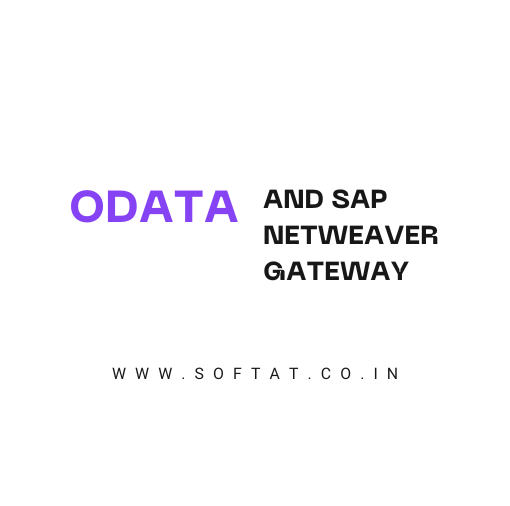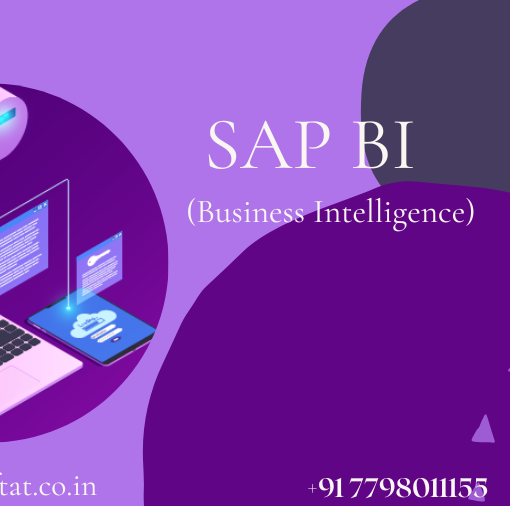ABAP: What is it?
The high-level programming language ABAP, developed by SAP, aids in the customization of the SAP ERP by big businesses. Workflows for financial accounting, materials management, asset management, and all other SAP modules may be modified with the aid of ABAP. Both ABAP and Java are supported by SAP’s current development environment, NetWeaver. In SAP, ABAP stands for Advanced Business Application.
The SAP invention that has received the most attention recently is the SAP HANA database (High-performance Analytical Appliance). It combines online analytical processing (OLAP) with online transaction processing (OLTP) (OLAP). It is a platform that enables innovators as developers switch to HANA and create fresh solutions.
Many new applications are now developed using SAP HANA as the primary database as the majority of SAP products migrate to this platform. HANA is more than simply an alternative to conventional hard disk-based storage systems; it is one. While HANA is capable of carrying out all the functions of a standard DBMS, it also offers several advantages in real-time that a standard SAP NetWeaver database server cannot.
Understanding and mastering new in-memory, column-oriented, relational database strategies is crucial in light of this transformation, as is leveraging SAP ABAP on HANA to enhance an existing ABAP-based application. Simply said, SAP ABAP on HANA is ABAP programming that makes use of all the modeling capabilities of the SAP HANA database.
ABAP programs with objects
The development of Object-Oriented ABAP Programming has caused modifications in the past for SAP programming using ABAP. Several new ABAP language components have been included in SAP ABAP on HANA releases 7.40 and 7.50. If you are a technical SAP consultant who has just begun learning ABAP, we strongly advise that you access this step-by-step guide on ABAP Programming Best Practices to learn more about Object-Oriented ABAP Programming.
This ABAP training course will focus on best practices for producing SAP ABAP source code utilizing ABAP tools and frameworks, as well as ABAP transitions from the older ABAP programming style to the more recent ABAP Objects programming style. The finest basis for SAP ABAP on HANA has been found to be this course.
Leaving behind Classic ABAP
Although the move from traditional ABAP to ABAP on HANA is straightforward to comprehend because the rules for SQL programming are still applicable to SAP HANA, there is just a shift in how rules are applied, and this is the main emphasis of the course.
For instance, if a CDS view is developed using ABAP on HANA, it may be utilized in the ABAP application in the same way as a traditional view and seen in SE11. A CDS view can also be made available to non-ABAP applications.
Training in ABAP for HANA
The course emphasizes the most recent developments in HANA and HANA Database. It acquaints developers with the distinction between the paradigms of Data to Code (traditional ABAP) and Code to Data (recent HANA Approach). The classic Data to Code method involves retrieving a sizable quantity of data from the database, which is then processed using internal tables on the application server.
Additionally, code push-down, often known as code to data, involves storing calculations that need a lot of data in a database rather than moving it around manually. The course starts with fundamental ideas including the Insert-only principles, Data Compression, and SAP HANA Column Store, which form the framework of HANA for ABAP. These methods are in charge of the quicker data retrieval and less memory consumption. Additionally, it will offer comprehensive technical insight into key ABAP on HANA capabilities like:
- fresh syntax
- Core Data Service (CDS), a new data modeling infrastructure;
- ABAP Managed Database Procedures (AMDP), a new approach to using a native scripting language similar to HANA SQL Script;
- ABAP Database Connectivity (ADBC); and ALV IDA Open SQL and Performance Tuning, a technique similar to traditional ALV with pagination features.
Tools for Advanced ABAP on HANA
Advanced ABAP development tools include CDS, AMDP, ADBC, and OpenSQL. They may be used with environments for HANA administration, modeling, and data provisioning like Eclipse or SAP HANA studio. Developers can logically segregate data retrieval with the use of these ideas.
It is also crucial to understand that SAP is data agnostic and that, with the exception of Native SQL statements, DB specific hints, and implicit DB sorting, current ABAP code is still acceptable for the new HANA database. Although it may seem complicated, SAP has combined all of these tests within its integrated Code Inspector (SCI).
The SQL Performance Tuning Worklist (SWLT), SQL Monitor (SQLM), and SQL Trace standard transactions allow the SAP HANA system to atomically identify performance problems in code (ST05).
Who Needs to Study ABAP on HANA?
ABAP Application Developers, Development Consultants, and ABAP Architects who are presently migrating from ECC to S4HANA are the greatest candidates for ABAP on HANA training. They would want to use the state-of-the-art ABAP on HANA in-memory capabilities rather than the outdated ABAP they are now utilizing to construct apps. Developers may create scalable applications and guarantee optimal HANA database usage by utilizing ABAP on HANA.
This strategy produces apps and reports with a rapid response time. Additionally, by acquiring new ABAP on HANA abilities, you’ll become a knowledgeable member of your team. The Dice Salary Survey shows that SAP HANA professionals make an average salary.
In addition to database development, ABAP on HANA ideas are also applied to UI5/FIORI development. A CDS view, for example, can be utilized as a web application and provided as an OData service. Understanding and utilizing the aforementioned functionalities, such as CDS and AMDP, is essential to exploring such SAP developments.
Integration with SAP Fiori and UI5
SAP ABAP on HANA seamlessly integrates with SAP Fiori and the UI5 framework, enabling the creation of modern and intuitive user interfaces. Developers can build responsive, mobile-friendly applications using SAPUI5 and deliver a consistent user experience across various devices. The combination of ABAP on HANA, Fiori, and UI5 empowers organizations to modernize their legacy systems and provide a more engaging user interface.
What is the difference between SAP ABAP and SAP HANA?
SAP ABAP (Advanced Business Application Programming) and SAP HANA are two distinct components within the SAP ecosystem, serving different purposes. Here’s a breakdown of their differences:
- Functionality:
- SAP ABAP: ABAP is a programming language used for developing and customizing SAP applications. It provides a set of tools and capabilities to build, modify, and maintain business applications within the SAP environment. ABAP enables developers to create program logic, perform data processing, and design user interfaces.
- SAP HANA: HANA, on the other hand, is an in-memory database platform. It is designed to handle high volumes of data and deliver real-time analytics and processing capabilities. HANA provides advanced data modeling, analytics, and integration capabilities to support complex data processing and reporting requirements.
- Purpose:
- SAP ABAP: ABAP is primarily focused on application development, customization, and maintenance. It allows developers to create and modify business applications, reports, and interfaces within the SAP system. ABAP applications can be used to handle various business processes, such as finance, sales, procurement, and more.
- SAP HANA: HANA is a database platform that aims to provide high-speed data processing and real-time analytics. It is designed to store and retrieve data rapidly from memory, enabling organizations to perform complex queries, advanced analytics, and data-intensive operations with improved performance.
- Technology:
- SAP ABAP: ABAP is a programming language specifically developed by SAP for creating applications within the SAP environment. It has its own set of syntax, keywords, and development tools. ABAP programs run on the application layer of the SAP system and can access data stored in the underlying database.
- SAP HANA: HANA, on the other hand, is a database platform that leverages in-memory computing technology. It combines a columnar database with advanced data compression techniques, parallel processing, and distributed computing capabilities. HANA supports SQL and offers additional programming models, such as SQLScript and calculation views, for advanced data processing.
- Integration:
- SAP ABAP: ABAP applications can run on various database platforms, including SAP HANA. ABAP programs can access data stored in different databases through the Open SQL or Native SQL interfaces. ABAP programs can also be integrated with other SAP components and technologies, such as SAP Fiori, SAP NetWeaver, and SAP Business Warehouse (BW).
- SAP HANA: HANA serves as a database platform for storing and processing data. It can be integrated with various application layers and technologies, including ABAP, Java, and other programming languages. SAP ABAP on HANA combines the power of ABAP programming language with the in-memory capabilities of HANA, enabling developers to optimize and accelerate their ABAP applications.
In summary, SAP ABAP is a programming language and development environment used for creating SAP applications, while SAP HANA is an in-memory database platform designed for high-performance data processing and real-time analytics. SAP ABAP can run on different databases, including HANA, and can be integrated with various SAP components, whereas HANA serves as a powerful database platform that can be integrated with different application layers and technologies.
Conclusion:
SAP ABAP on HANA represents a significant leap forward in application development within the SAP ecosystem. By combining the power of ABAP with the speed and agility of SAP HANA, organizations can optimize their business applications for superior performance, advanced analytics, and real-time decision-making. The ability to leverage in-memory computing, simplified data modeling, and code pushdown techniques results in increased efficiency, enhanced user experiences, and improved business outcomes. With SAP ABAP on HANA, enterprises can unlock the full potential of their SAP landscape and stay ahead in today’s fast-paced digital world.





